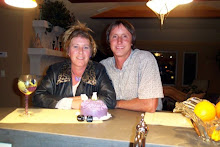Lighting creates the mood, visual impact and in some cases, the actual composition of your photographs. Lighting is without question, the single most important aspect in photography. Today let's discuss how your camera sees light.
If you look at a standard gray scale one end is pure white and the other is pure black. Of the several shades in between, the one right in the middle is called "neutral or middle gray."
Middle gray is the standard used to determine a perfect exposure and is what your camera's light meter is calibrated to expose for. With each shot, the camera reads and evaluates the overall brightest and darkest area of the scene, then calibrates or averages the light (highlight) & dark (shadow) area of the image, looking for a middle gray exposure. Today's camera's are fairly accurate and this averaging metering system can produce good quality images in most cases. Or it will produce an exposure that you can at least manipulate to your liking.
Now under ideal lighting situations the averaging system that your camera uses to evaluate the lighting is fine. However anything less than ideal lighting is going to create some problems, when you use your camera, in auto exposure mode. A good example of this is, when you include, a large area of sky in your composition. The camera's meter averages the overall scene, and if your sky is considerably brighter than your main subject, or foreground area, you will end up with an under exposed subject or foreground. Now if you are trying to shoot a silhouette that's fine. But if your main subject is in the foreground you will need to make an exposure compensation, by increasing your exposure manually, or use a fill flash to get the proper exposure on your main subject.
Another difficult lighting situation is winter shots with lots of white snow. The camera will see all that snow and try to make the overall scene middle gray, underexposing the shot unless you make a manual adjustment to compensate.
Knowing how your camera works and how it does its calculations will help you "fool the camera" and correct the exposure when you want to have control over the final results.
When you're in a situation with a lot of snow, for instance, you can do a few things to compensate for the mistake your camera will be inclined to make...
The first and easiest solution is to see if your camera might actually have a setting for snow. If it does, then adjust your camera settings accordingly. This tells the camera to adjust for the scene being predominantly white. The camera will automatically make the adjustments and not try to make your snow middle gray.
The other, more advanced, thing you can do is adjust the camera settings yourself. In your camera's modes you can set your camera to take shots that will be 1-2 f-stops over or under exposed (read your manual for how to do this on your camera). Most SLR cameras have a + &- dial that you can make your adjustments with. Experiment and take a few notes. In no time it will become second nature to you and you will recognize when an exposure compensation is needed almost instantly.
Take a few test shots and look at your histogram - A perfect exposure will have a peak like a mountain or hill in the middle. If this peak is to the left it is leaning toward under exposure and if it is to the right it is leaning towards over exposure.
When switching modes and making these types of adjustments, be sure to change them back when you're done!
Terry Day is an International Hall of Fame Photographer. He has been a Master Photographer and member of the Professional Photographers of America for 30 years. You can sign up for his free photo tips and view a portfolio of his work @

No comments:
Post a Comment